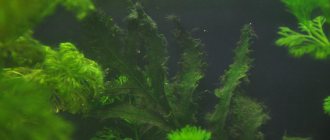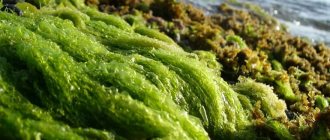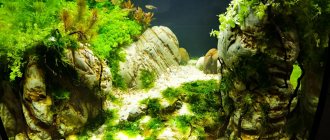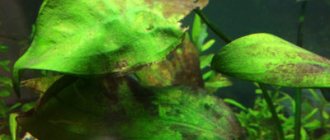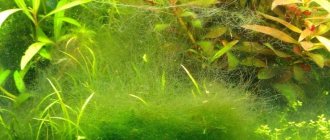The wide diversity of the flora of planet Earth delights and fascinates biologists. Plants provide home and food for representatives of the animal world, and are also used by humans in many areas. Living organisms of the deep sea, in particular algae, do not stand aside either. Red algae, which are actively used in medicine, industry and agriculture, are of particular value due to their unique properties.
Red algae are actively used in medicine, industry and agriculture
Description and distinctive features
The body of multicellular red algae, purple algae, an ancient group of plants, consists of a long dissected thallus, similar in structure to the stem and leaves. The length of some bushy and leafy representatives reaches 2 m. 95% of such large plants live in the sea, the rest live in fresh water bodies, attached by rhizoids.
Along with large ones, scarlet beetles come in unicellular (bapgiaceae), filamentous (Porphyra) and lamellar forms.
Among red algae there are many parasites that settle on the bodies of relatives.
In nature, they are found in pink, red, crimson, bluish, and even black colors due to a special auxiliary pigment. This dye of red algae is contained in small chromatophores of the delicate and fragile body along with chlorophyll.
Red algae pigments:
- phycoerythrins give red and orange colors;
- phycobilins – blue;
- Carotenoids are yellow pigments.
Strongly absorbing sunlight, they are able to survive at great depths (100-200 m), storing purple starch.
Light adjustment
Darkening the tank will help eliminate representatives such as Xenococus, Spirogyra, Euglena and cyanobacteria. To do this, cover the container with a thick, impenetrable material, after turning off the lighting. If species of flora that prefer bright and strong light are planted in the aquarium, then the plants are temporarily moved to other containers. The aerator is left on.
2-3 days after darkening, dead algae is collected manually and the water is changed. For greater efficiency, the darkening method is used in conjunction with the launch of herbivorous fish.
Life cycle and reproduction
The colorful Caño Cristales River
The studied life cycles of red algae are complex and not similar to other groups of these plants. The presence of one multicellular stage is required, and all stages are without motile flagellar cells.
In the life of most of these plants, during sexual reproduction, 3 generations change:
- A haploid gametophyte is an independent haploid plant with gametangia: egg-shaped carpogonal cells with carpospores and spermatangia for the production of sperm.
- Diploid carposporophyte is an auxiliary cell that contains double carpospores. Here, the fertilized carpogonium cell, using a long thread, placed the nucleus, where division began.
- The diploid sporophyte is represented by passively floating carpospores, which, when settling, become tetrasporophytes, similar to ordinary sporophytes.
Asexual reproduction involves immobile, flagellated spores. Bagniaceae and Floridaea classes of the red algae division reproduce vegetatively.
Popular message topics
- Table tennis
Table tennis is one of the sports games, which involves throwing a ball over a table divided in half by a net using special rackets. - Immunity
Every person in the world has suffered from some kind of disease at least once. Some people tolerate it easily, others with complications. But what helps us get rid of the disease or even prevents us from getting sick at all? Hands? Legs? Eyes? Nose? Of course not. - The constellation Gemini
the Twins is a very red constellation that even a novice in the starry sky can find. This constellation was named exactly like that thanks to the brothers of Princess Elena. Inside this constellation, there are two stars,
Role in nature
Photosynthetic plants, scarlet plants, are among the primary producers of the sea ecosystem. In addition, invertebrate and vertebrate animals feed on algae. Coralline red algae are the basis of coral reefs.
With the help of these algae, sea water is checked for contamination with radioactive and other harmful substances. These substances accumulate in the bodies of algae.
Small bodies of water can clean themselves thanks to red algae.
Scarlet cells contain polyhydric alcohols with low molecular weight carbon. Some species contain inclusions of magnesium and calcium carbonate in their cell walls. The inner cellulose layer of cells and the outer amorphous layer contain the substance agar.
Types of algae and names
The most diverse among the attached algae are red ones - the number of their species exceeds 4,000! And the largest are brown ones (there are about 1,500 species): in calm waters, kelp and macrocystis reach a length of more than 100 and 200 m, respectively. By the way, macrocystis is the “record holder” among algae in terms of growth rate: per day its thalli grow by 30 cm .
Sargassum also belongs to brown algae, among which there are forms attached to the bottom and unattached, floating. These floating algae inhabit a vast area in the Atlantic Ocean - the Sargasso Sea, which has no boundaries. Columbus called it the Sea of Grass because... “On September 16, 1492, when the sun rose over the ocean, the sailors of Columbus’s squadron saw a sea covered with algae to the horizon.” It was named Sargasso because the algae with many spherical formations resembled bunches of grapes (the Portuguese word “Sargaso” means a variety of small grapes). Initially, it was believed that sargassum was coastal algae torn from the shores, carried away by the current. But studies have shown that the algae of the Sargasso Sea are significantly different from the inhabitants of the coastal waters of America, Africa and Europe. The various species of worms, crustaceans, crabs and fish living among the floating sargassus also differ. There is an assumption that the floating sargassum and the animals living among them originated from ancestors who lived on the coast of the legendary Atlantis.
Algae are the most productive plants on Earth. Over the course of a year, they (micro- and macrophytes) produce at least 10 times more products than terrestrial flora! The production of macroalgae alone is 150 tons of green mass per 1 ha. And in the coastal waters of Murman, this figure for kelp, fucus and other algae reaches an average of even 200 tons per 1 hectare! The daily growth of large algae is 30-50 g per 1 kg. And we should perceive these numbers not as abstract, but as having the most direct relation to our (each individual and society as a whole) life. After all, algae is a living pharmacy, which our distant ancestors knew about. We, the children of technological progress (and chemistry), have completely forgotten about this.
One ancient legend tells how the hero of ancient Sumer, Gilgamesh, more than 3000 years ago tried to find the magic herb of life, which makes a person immortal. He found her at the bottom of the sea, but, unfortunately, he was unable to save her. The ancient Greeks noticed that those who fought at sea healed their wounds faster than those who fought on land. In China, where the art of healing with sea plants dates back over 4,000 years, algae are successfully used to treat abscesses, dropsy, goiter, and vascular diseases.
WHY DO THE RAYS OF THE BLUE PART OF THE SPECTRUM REACH GREATER DEPTHS THAN THE RED PART?
From algology, a branch of botany devoted to everything related to algae, we can learn that algae of different departments are able to live at different depths of water bodies. Thus, green algae are usually found at a depth of several meters. Brown algae can live at depths of up to 200 meters.
Application
Interesting facts about red algae and their importance in human life:
thanks to vitamins and minerals, medicines are made from scarlet flowers; cosmetic preparations against skin aging are made from phyllophora;
- using medicine from red algae they fight the immunodeficiency virus;
- Chondrus extract, a red algae from the North Sea, heals the respiratory tract;
- Russian biologists are developing the scientific basis to use the Black Sea for the cultivation of red algae.
The importance of red algae, which provide more biomass than land plants, is difficult to overestimate. The food industry and microbiology produce plant agar-agar jelly. In many countries, porphyra and gracilaria are added to healthy menus as gourmet dishes. Red algae is a source of iodine, bromine and potassium salt. By dry distillation, resin, coal and acetone with methyl alcohol are obtained. Algae is used to feed livestock and fertilize fields; sapropel mud with scarlet grass is used for treatment.
Use of scarlets
Purple flowers are used in industry and cooking. They contain a large amount of vitamins and microelements, and are based on easily digestible protein. Red algae fatty acids help in skin renewal by participating in the process of building cell membranes. Agar-agar is isolated from them, which is used as a natural substitute for gelatin.
Types of red algae that are used to produce agar:
- ceramium;
- gracilaria;
- ahnfeltsion;
- helidium.
Red algae contains many vitamins and microelements and is used in cooking.
Porphyra red algae is used as a food product in the USA, Korea, Japan and China. It is considered a gourmet dish and is grown on a large scale in specialized farms. Porphyra is rich in provitamin A, calcium, phosphorus, magnesium, fluorine and B vitamins. These substances restore the balance of minerals and help strengthen vascular walls.
In cosmetology, scarlet leaves are used to create products to combat skin aging. They are antioxidants and prevent oxidative processes in the body. In addition, the carotenoids and polysaccharides contained in these plants moisturize the skin and have a lifting effect.
Less valuable species of scarlet grass are used in agriculture to fertilize the soil and feed livestock. On the seabed, they act as a source of food and shelter for deep-sea inhabitants.
Red algae have a number of properties due to which they are used in medicine and related fields. They are involved in the restoration of pancreatic cells and are part of expectorant drugs.
Purple plants have the following useful qualities:
- immunomodulatory;
- antiviral;
- antimicrobial;
- antibacterial;
- antimutagenic;
- anti-inflammatory;
- antifungal.
Red algae is also useful in medicine, due to its anti-inflammatory properties.
The use of agar is not limited to the preparation of jellies, jams and marmalade. It is actively used in microbiology for growing colonies of bacteria and fungi and their subsequent study. Agar-agar is indispensable in this industry, since without it it would be impossible to develop medications to combat dangerous viruses.
Agar-agar is used to produce soft capsules for medications that need to be dissolved. The most important component of the chondrius species (Irish moss) are polysaccharides called carrageens. They tend to inhibit the growth of HIV virus cells.
Soft capsules for medicines are produced from aga-agar algae
Red algae in the seas of Russia
The habitats of scarlet moths are the coastal strip of the sea and the depths, rarely in fresh water. Russian seas contain more than 400 species of red algae.
Barents Sea - scarlet fish form coastal benthic vegetation with other representatives of aquatic flora. Porphyra umbilicala grows on steep rocks; lower down are littoral purple grasses, which are also found on the coast of Murmansk. Calcareous coralline and other algae live in the depths of the water.
White Sea - no deeper than 5 m there are many fucus trees, there are thickets of ahnfeltia, which break off and float in the bays in large layers.
Algae Anfeltia
Black Sea - has a reserve called the Small Phyllophora Field, located northwest of Crimea.
Chemicals and other methods
If the aquarist does not have enough time to eliminate parasites, then express control methods will come to the rescue:
- Chemistry - preparations produced specifically for the destruction of pests will help quickly clean the tank of mud and plaque. However, it should be taken into account that chemicals upset the balance of the aquarium and can harm the inhabitants.
- Hydrogen peroxide against algae in an aquarium dosage - the product is used in a concentration of 2.5 ml per 10 liters of liquid. When adding to the water, aeration is increased, and then 25% of the liquid is replaced. The method is effective in controlling black weeds, euglena and cyanobacteria.
- Carbon dioxide – A gas supply combined with intense light will help eliminate green pests.
The invasion of harmful algae threatens the well-being of flora and fauna in the aquarium. Having noticed uninvited guests, you should accurately determine the cause of the development of weeds, and begin cleaning the tank, following the advice and recommendations of experienced aquarists.
Classification
The department Red algae belongs to the subkingdom Biliphyta, and consists of a single class - Rhodophyta (purple), formed by two subclasses Floridoficida and Bangiophyticida. This is a large group of algae, represented by 400 genera and 3900 species.
Class Banguiaceae
These include the freshwater and marine filamentous Bangia and the leaf-shaped Porphyra.
Porphyra consists of a body similar to a 2-layer plate, which tapers at the bottom like a stalk, then there is a sole and rhizoids. The life cycle of porphyry begins with carpogons, and continues in the calcareous shell of a bivalve mollusk. The sporophyte develops here.
Porphyra is edible, green and black (“nori”) are used in preparing sushi.
Florida class:
These algae already have a complex thallus, which consists of branched threads, and apical growth. There are no unicellular forms, as well as division into tissues.
Batrachospermum is a freshwater algae, also called frogweed. Prefers fast water and clear streams. The length of the filamentous gametophyte Batrachospermum is 40 cm.
Subclass Hildenbrandiaceae
Consists of one family with 8 genera. Reproduction is sexual and asexual. The bodies of the gametophyte and sporophyte do not differ only when the reproductive organs are considered. Multinucleate cells contain lamellar chloroplasts, but lack pyrenoids. The subclass is distinguished by the appearance of a special nourishing tissue made of numerous small-celled filaments.
Subclass non-maliophicidal
Belongs to a primitive group of red algae that live in fresh water. Plants without auxillary cells and also without feeding cells. The filaments of the gonimoblast begin with a fertilized carpogon or an underlying cell with a nucleus that has passed into it.
Subclass Ahnfelciaceae
Includes 10 species inhabiting the cold northern Pacific, Atlantic and some regions in the Arctic Ocean. High-quality agar-agar is extracted from these algae. There are unattached thalli that reproduce vegetatively. Attached anfelcia is capable of reproducing sexually.
Anfeltia equinoxum is considered a rare species and is protected by law.
Subclass rodeniophycidaceae
The order is clearly demarcated and occupies a separate place in the taxonomy of the class. Difference: there is no division into auxillary and carpogonal branches - it is a single whole. Rhodomenium algae prefer warm habitats, but are also found far in the North.
Algae growth
The growth of algae depends primarily on light, which limits the depth of their habitat. For light, even in well-lit places, there is fierce competition between plants, which sometimes does not occur without oddities, when, for example, larger alaria alaria are replaced by much smaller kelp. This happens because at the beginning of their development, young, still short alaria plants are obscured by kelp, their development is inhibited, and kelp becomes the dominant algae. If you remove all the kelp plants with pruners, the alaria will grow again. But there is also a struggle for light between algae of the same species if their “foliage” becomes too thick. Then young plants can settle only along the edges of dense clusters of sporophyte parents or wait until free space appears in the thickets of adult plants.
In addition to good lighting, for normal growth macrophytes also need water movement, which ensures the flow of nutrients (mainly nitrogen and phosphorus) and oxygen to them. In addition, the movement of water limits the settlement of herbivorous animals on the algae. However, too strong a current can tear the algae away from the substrate to which they are attached (soil, stones, shells, etc.), or lead to damage to the plant itself.
The growth and development of algae largely depends on temperature. It determines, for example, at what point algae thalli will develop from microscopic to macroscopic or when macrophytes begin to prepare for reproduction. For example, in some species of kelp, reproductive organs are formed only at temperatures below + 10°C, and this is enough for it to last for just one night! Temperature accelerates or slows down the rate of growth and development of individual species, which causes competition between them.
The presence of herbivorous animals (gastropods, sea urchins, crustaceans, fish) is also a factor influencing the life of algae. In the story about sea urchins, we already talked about how the destruction of sea otters by killer whales led to excessive reproduction of sea urchins, which the sea otters fed on; and hedgehogs, whose biomass increased 8 times over 10 years, “ate” brown algae, reducing their biomass 12 times over these years! The same situation was observed off the coast of Canada: with active fishing for lobsters feeding on sea urchins, the size of kelp thickets significantly decreased. Therefore, quite often the depth of algae habitat depends on the presence of sea urchins. Some types of algae are even sensitive to the presence of their own relatives, but of a different species. For example, fucus usually grows in an area that is exposed at low tide - the deeper soil is occupied by other algae. In the Arctic, where the number of algae species decreases, fucus grows deeper. The same thing is observed in the highly desalinated Baltic Sea.
Currently, large seaweeds are disappearing from some bays. This is the result of water pollution. The fact is that in such an environment microscopic algae quickly develop - they overgrow seedlings of larger algae and destroy them, because often the seedlings of thalli of large algae are not larger in size than their “destroyers”.
Red algae in home aquariums
Aquadesign is becoming a popular trend in aquarium maintenance. The role of the basic element in the aquarium decor was given to red algae, with which the water container looks elegant and resembles hot countries. In order for the scarlet to fit in and not disturb the fragile ecosystem, it needs to create special conditions and careful care. Otherwise, the algae will manifest itself as a real “ideal parasite.”
Reasons for appearance
It is almost impossible to prevent red algae spores from getting into the aquarium. They settle on plants and thus “move” to a new place of residence. They attach to fish, decorations, and even end up in fish food. Some then grow small and invisible, while others grow to occupy the entire area of the aquarium.
Conditions for the rapid development of purple flowers:
- oversaturation of the container with nutrients (organics);
- poorly filtered water, rarely cleaned aquarium and irregular water changes;
- there is too much water flow inside;
- carbon dioxide in insufficient quantities;
- the length of daylight is exaggerated, and the lighting is too powerful.
As a result, the biological balance is disrupted and a source of food appears for the “red devils,” which instantly grow. After the errors are corrected, the balance will be restored and the scarlets will disappear. Sometimes herbivorous fish and shellfish help.
Planting vegetation
Another way to combat green pests is to plant fast-growing plants that take large amounts of nutrients from the water. As a result, the weeds do not have enough nutrition, and lower species die. Elodea in the aquarium, hygrophila, aquarium lemongrass, and hornwort will help eliminate green and purple growths in the tank.
